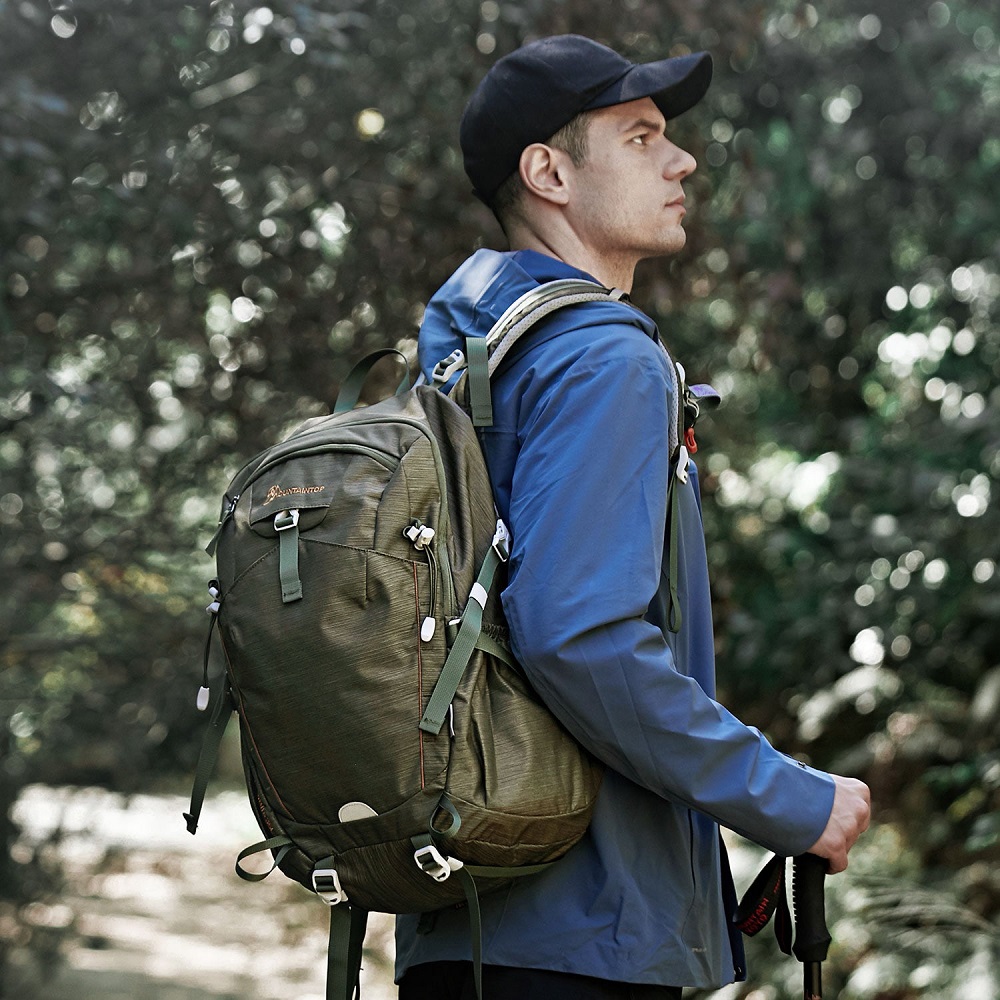Importance of a Good Hiking Backpack
How a Backpack Enhances Your Hiking Experience
A good hiking backpack is vital for comfort and efficiency on the trail. It helps carry gear safely, protects items from outdoor elements, and keeps essentials organized. Proper weight distribution reduces strain on your shoulders and back, ensuring a more enjoyable hike. Specialized designs meet different hiking needs, offering features like hydration compatibility and adjustable harness systems. With a well-suited backpack, you can carry necessary gear without sacrificing mobility or comfort.
Common Mistakes When Choosing a Backpack
Many hikers make errors when picking a backpack, leading to discomfort or wasted investments. Choosing a backpack that’s too small limits storage, while oversized ones add unnecessary weight. Ignoring fit and adjustability can result in poor support, causing back pain on long hikes. Overlooking the importance of material quality might lead to durability issues. Make sure to match the backpack’s features to the type of hiking trips you plan. Awareness of these mistakes helps you invest wisely and ensures your backpack meets your needs.
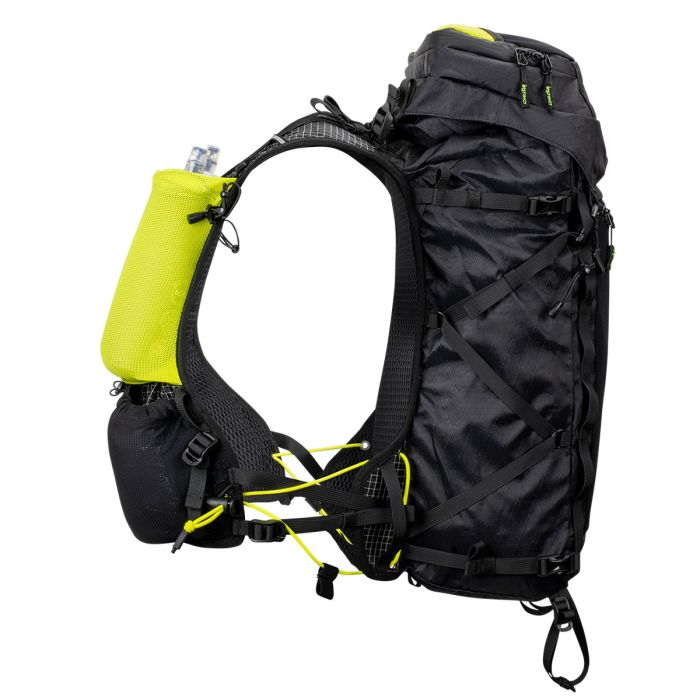
Types of Hiking Backpacks
Choosing the right type of hiking backpack depends on your needs and trip duration. Each type of backpack is designed for specific purposes, ensuring you can hike comfortably and efficiently.
Daypacks for Short Trips
Daypacks are ideal for short hikes or day-long adventures. These backpacks are lightweight and compact, usually with a capacity of 15 to 35 liters. They are designed to hold essentials like water bottles, snacks, a first-aid kit, and extra clothing. Most daypacks offer padded shoulder straps for comfort and small compartments for organization. Look for features like hydration reservoir compatibility for easy water access during hikes.
Backpacking Packs for Multi-Day Expeditions
Backpacking packs are essential for multi-day hiking trips or camping adventures. These packs have larger capacities, ranging from 50 to 80 liters or more. They provide ample space for carrying tents, sleeping bags, cooking gear, and extra clothing. Many backpacking packs include adjustable harness systems to distribute weight evenly across your back and hips. Features like external attachment points for gear and integrated rain covers are also common. Choose a well-fitting backpacking pack to prevent discomfort on longer journeys.
Hydration Packs for Easy Access to Water
Hydration packs are designed primarily for carrying water and staying hydrated on the trail. They are a great option for runners, bikers, or hikers on shorter trips. These packs have a built-in water reservoir, usually ranging from 1 to 3 liters, with a drinking tube for hands-free hydration. Hydration packs are lightweight and include minimal space for extra items like keys or energy gel packs. Opt for these packs when water access is a top priority during your hike.
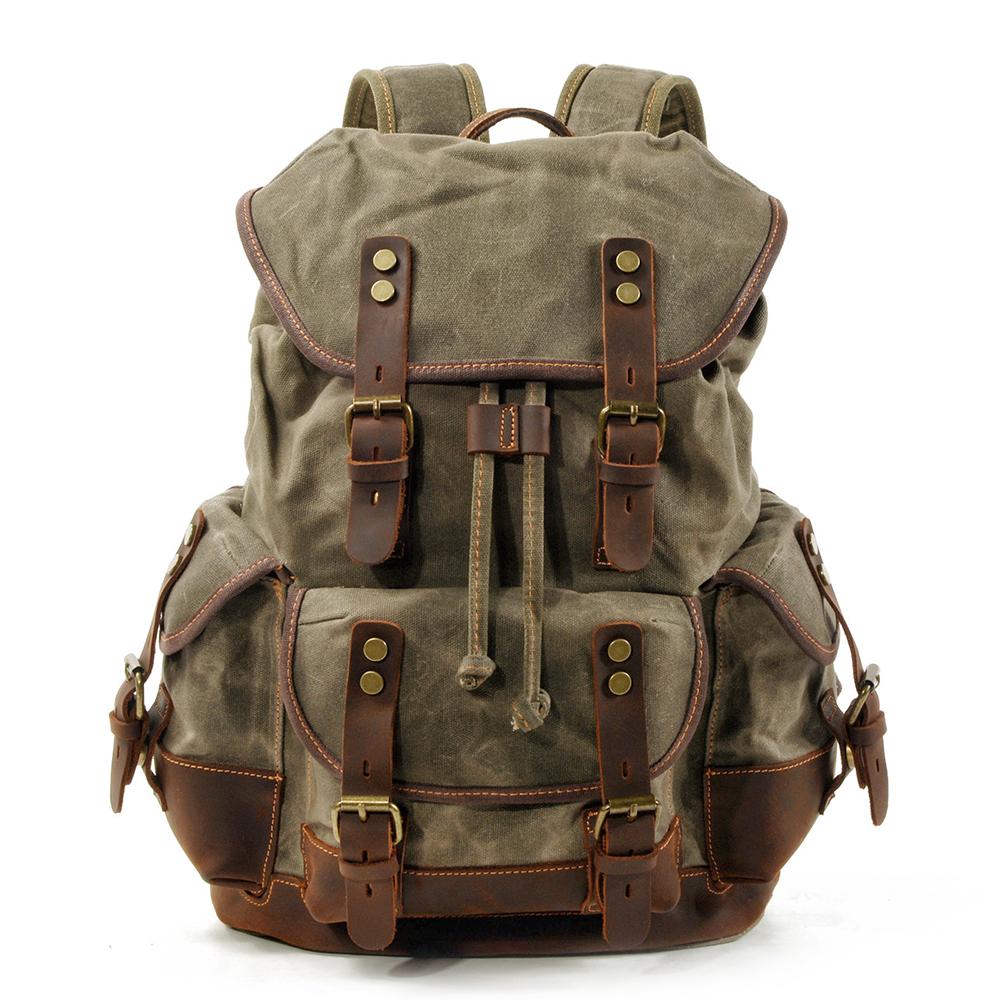
Features to Look for in a Hiking Backpack
Choosing the perfect hiking backpack involves understanding essential features that enhance your trail experience. From size and weight to storage and durability, each feature plays a crucial role in making your adventure comfortable and efficient.
Size and Capacity
The size and capacity of your hiking backpack should match your trip’s requirements. For day hikes, backpacks with a capacity of 15-35 liters are ideal. For longer expeditions, backpacking packs with 50-80 liters can carry sleeping bags, tents, and cooking gear. If unsure, opt for a versatile size that can adjust to various trip durations. Make sure the backpack doesn’t exceed a manageable size for your body.
Weight and Comfort
A lightweight backpack minimizes fatigue and enhances mobility, especially on long hikes. Padded shoulder straps and hip belts add comfort by distributing weight evenly. Look for an ergonomic design that offers proper load balance. Avoid unnecessarily heavy backpacks, as they can strain your body during extended treks. Your backpack’s weight should align with the type of gear you plan to carry.
Storage and Compartments
Adequate storage ensures easy organization of gear. Smaller compartments help separate items like food and personal belongings. Larger compartments are useful for carrying bulky essentials. Look for external attachment points for gear like trekking poles or sleeping mats. Hydration-compatible compartments make water access smoother. Efficient storage design reduces the need for unpacking frequently on the trail.
Material and Durability
High-quality materials ensure your backpack withstands harsh weather and frequent use. Nylon and polyester are common choices for their strength and water resistance. Reinforced seams and durable zippers extend a backpack’s lifespan. Choose waterproof or water-resistant materials for rain protection. A good hiking backpack should stay intact through rough terrains and heavy use.
By focusing on these features, you can find a hiking backpack that complements your trips and style. Prioritize comfort, organization, durability, and size to make your purchase worthwhile.
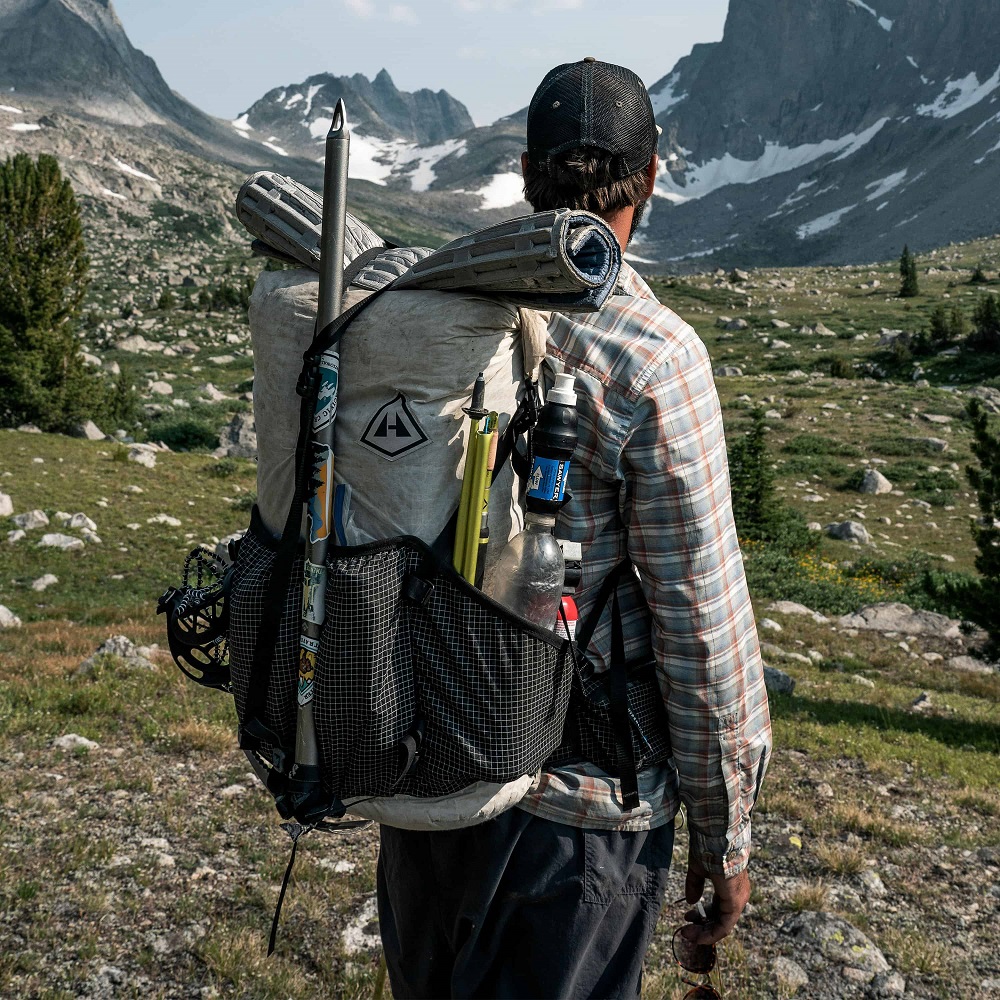
Fit and Adjustability
Proper fit and adjustability are crucial for a comfortable hiking experience. A well-fitted backpack reduces strain on your body and improves your overall hiking efficiency.
Choosing the Right Size for Your Body
Select a hiking backpack based on your torso length, not your height. Measure your torso from the base of your neck to your hipbone. Choose a pack that matches this measurement for better comfort and support. Avoid using oversized or undersized backpacks, as they can strain your shoulders and back. Test different backpack models to ensure the size fits well with your body shape.
Adjusting Straps and Harness Systems
Adjusting straps ensures a secure and snug fit for your backpack during hikes. Tighten or loosen shoulder straps to distribute weight evenly. Adjust the hip belt to fit firmly around your hips for better stability. Use sternum straps to prevent shoulder straps from slipping and improve load balance. Test the harness system after adjustments to make sure the pack stays stable while walking.
Importance of Back Support
Back support is key to minimizing fatigue during long hikes. Look for backpacks with padded back panels for comfort. Ensure the backpack has an ergonomic design to align with your spine. A proper support system reduces back strain and prevents discomfort over extended trips. Always prioritize back support when choosing a hiking backpack for any trip duration.

Preparing Your Backpack for a Hiking Trip
Packing your hiking backpack properly ensures a smoother and more enjoyable experience on the trails. By organizing your essentials effectively, you can access items quickly and carry weight comfortably. Proper preparation minimizes strain, improves safety, and maximizes your hiking efficiency.
Packing Essentials for Day Hikes
For short hikes, focus on carrying only essential items. Here’s what you should pack:
- Water and Snacks: Stay hydrated and energized with water bottles, a hydration pack, and high-energy snacks.
- Clothing Layers: Pack a lightweight jacket or extra clothing for changing weather conditions.
- Navigation Tools: Bring a map, compass, or GPS device to stay on track.
- First-Aid Kit: Carry essential items like bandages, antiseptics, and pain relievers.
- Sun Protection: Include sunscreen, a hat, and sunglasses for protection from the sun.
- Emergency Essentials: Keep a whistle, multi-tool, and flashlight in case of emergencies.
A daypack with a capacity of 15–35 liters is usually sufficient to carry these items comfortably.
Organizing Gear for Multi-Day Trips
Multi-day hikes require more gear and careful organization to balance convenience and accessibility. Follow these tips:
- Bottom Layer (Heavy Items): Pack sleeping bags and tents at the backpack’s bottom to stabilize weight.
- Middle Layer (Heaviest Items): Store food supplies, cooking gear, and water close to your back for better load distribution.
- Top Layer (Frequent-Use Items): Place rain jackets, maps, and snacks on top for easy access.
- Side Pockets and Compartments: Use these for smaller items like sunglasses or first-aid kits.
- External Attachment Points: Secure trekking poles, sleeping mats, or other bulky items outside the pack.
Backpacking packs with a capacity of 50–80 liters offer ample space for multi-day trips.
Tips for Balancing Weight Distribution
Proper weight distribution prevents strain and improves hiking stability. Keep these tips in mind:
- Distribute Heavy Loads Evenly: Place the heaviest items close to your back and at mid-back height.
- Use Compression Straps: Tighten straps to stabilize the load and prevent shifting while walking.
- Align Weight with Your Balance: Test your backpack to ensure it feels stable and doesn’t tip you backward.
- Adjust Harness Systems: Customize straps and the hip belt to distribute weight evenly.
By organizing thoughtfully and balancing weight, you’ll reduce fatigue and hike more comfortably. Preparing your backpack efficiently is key to a successful outing, regardless of the trip’s duration.
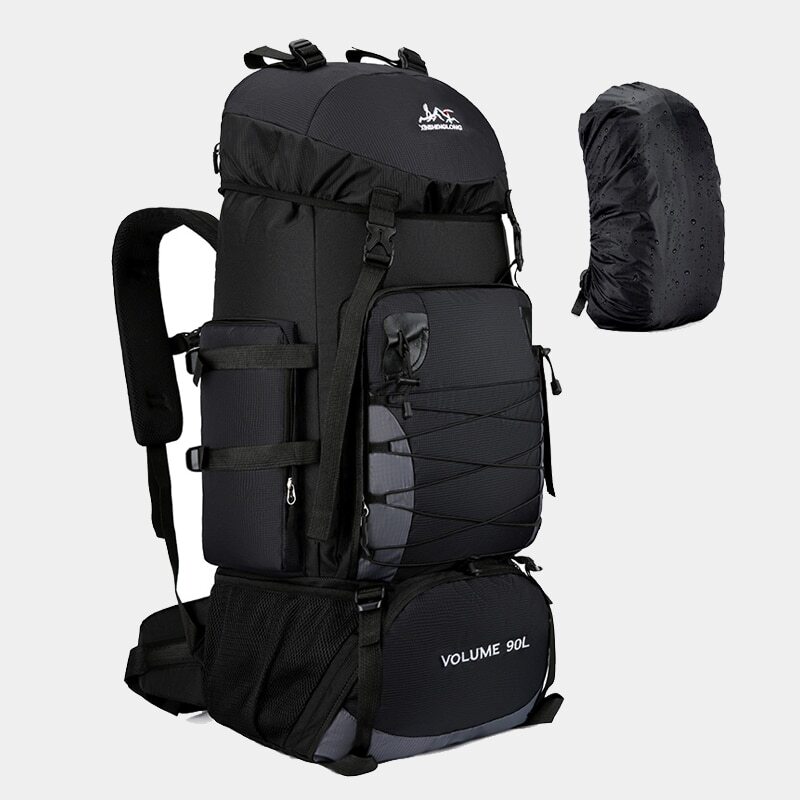
Maintenance and Care for Your Backpack
Proper maintenance and care ensure your hiking backpack lasts longer and performs well on every trip. Regular cleaning, timely repairs, and correct storage can preserve its quality and extend its lifespan.
Cleaning and Storing Your Backpack
- Clean Immediately After Use: Remove dirt, sweat, and debris to prevent material damage.
- Use Mild Soap and Water: Hand wash your backpack using mild soap and cold water. Avoid harsh chemicals.
- Focus on Zippers and Straps: Clean grime from zippers and straps to maintain functionality.
- Air Dry Thoroughly: Dry your backpack in a cool, ventilated area. Avoid direct sunlight to prevent fading.
- Store in a Dry Place: Keep your backpack in a cool, dry place to avoid mold or material damage.
Checking for Wear and Tear
- Inspect Regularly: Check for frayed straps, broken zippers, or holes after every hike.
- Examine Stitching: Look for loose seams or weak stitching that could lead to failure.
- Test the Buckles and Clips: Ensure all buckles, clips, and adjustments are functioning properly.
- Repair Small Issues Quickly: Use patches, replacement buckles, or stitching kits to fix minor damages.
Extending the Lifespan of Your Backpack
- Don’t Overload It: Pack within the backpack’s capacity to avoid strain on seams and zippers.
- Use a Rain Cover: Protect your backpack from rain and moisture to prevent material wear.
- Avoid Dragging It: Always pick up your backpack rather than dragging it on rough surfaces.
- Follow Manufacturer’s Guidelines: Adhere to care instructions provided by the brand to maintain its quality.
- Rotate Backpacks: If you own more than one, alternate their use to reduce wear and tear.
By cleaning, inspecting, and storing your hiking backpack properly, you’ll ensure it stays reliable for years. Quality care keeps it durable, safe, and ready for any adventure.
Recommended Brands and Models
Choosing the right hiking backpack also includes selecting from trusted brands and models. Reputable brands prioritize durability, comfort, and innovative designs for various hiking needs. Evaluating top brands helps ensure quality and reliability on trails.
Popular Hiking Backpack Brands
- Osprey: Known for ergonomic designs, Osprey backpacks provide excellent support and adjustability. Features like hydration compatibility and breathable back panels make them popular among hikers.
- Deuter: A trusted name for durable and functional backpacks, Deuter offers diverse options. Their packs often include advanced ventilation systems and sturdy designs for long-term use.
- Gregory: Renowned for comfort-focused backpacks, Gregory specializes in customizable fits. They provide excellent storage compartments and support, ideal for multi-day trips.
- REI Co-op: Known for affordability and quality, REI Co-op designs backpacks for all skill levels. These packs offer essential features without compromising durability.
- CamelBak: Ideal for day hikes and hydration, CamelBak’s hydration packs emphasize light weight and water storage.
Best Backpacks for Different Hiking Needs
- Day Hikes: The Osprey Daylite Plus is a lightweight option with hydration compatibility. It offers ample space for essentials and is easy to carry.
- Multi-Day Trips: The Gregory Baltoro 65 provides exceptional support for heavy loads. Its multiple compartments and adjustable harness system ensure a comfortable fit on long trips.
- Hydration Focus: CamelBak M.U.L.E. is equipped with a built-in hydration reservoir. This lightweight pack is perfect for staying hydrated on shorter outings.
- Budget-Friendly: The REI Co-op Trail 25 offers practical features at an affordable price. It’s a versatile option for casual to moderate hikers.
- Technical Hiking: The Deuter Aircontact Lite 65+10 is ideal for challenging terrains. Its advanced load distribution and ventilation system cater to extended and demanding hikes.
When selecting a hiking backpack, consider your needs and trip duration. Opt for a model that balances comfort, durability, and practicality. Popular brands and reliable designs ensure a worry-free adventure.
Embrace the Hiking Journey
In conclusion, choosing the right hiking backpack is fundamental to enjoying your outdoor adventures. By understanding your needs, considering essential features, and exploring popular brands, you can find the perfect backpack for your travels. This investment will enhance your comfort, performance, and overall enjoyment on the trails.
Prioritize Quality and Fit
Remember to prioritize quality and a proper fit when selecting your hiking backpack. A well-fitted and durable pack will make every hike more gratifying, allowing you to focus on exploring nature and enjoying the journey. Your comfort and safety depend on having the appropriate equipment, so take the time to make an informed decision.
Explore the Trails with Confidence
Armed with the right knowledge and tools, step onto the trails with confidence. You can conquer every hill and enjoy each scenic view while experiencing the incredible benefits of being in nature. Adventure awaits you—embrace it with an amazing hiking backpack that supports your passion for exploration. Happy hiking!
